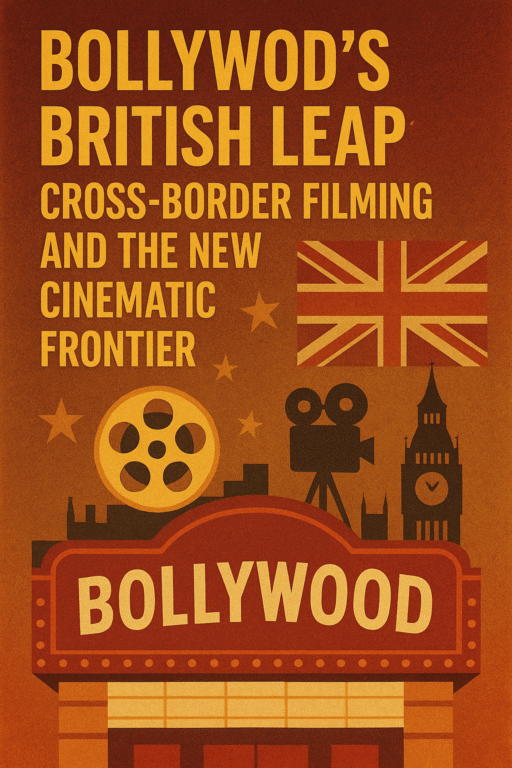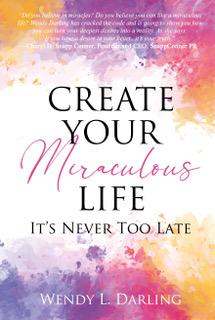TV & MOVIES
Why Film Directors Love Making Book Adaptations: Exploring the Intersection of Literature and Cinema

Why Film Directors Love Making Book Adaptations:
Exploring the Intersection of Literature and Cinema

Why Film Directors Love Making Book Adaptations:
Exploring the Intersection of Literature and Cinema
Before we dive deeper into the topic of why film directors love making book adaptations, we’d like to let our readers know that Studio Carry On Harry will be exploring this fascinating intersection of literature and cinema in this article. Through the lens of this topic, we’ll be examining why so many directors are drawn to adapting books for the big screen, and what makes certain adaptations successful while others fall short.
Whether you’re a fan of cinema or literature, there’s no denying the powerful impact that a good book adaptation can have. From the thrill of seeing your favorite characters brought to life on the big screen, to the excitement of experiencing a beloved story in a new way, there’s something truly magical about the process of adaptation.
So, whether you’re a die-hard fan of the book or simply a lover of cinema, we invite you to join us as we explore the world of book adaptations in Hollywood and beyond. Let’s dive in and discover what makes this unique art form so captivating for filmmakers and audiences alike.
There have been countless Hollywood films that were book adaptations over the years. Some of the most famous include “The Godfather” by Mario Puzo, “Gone with the Wind” by Margaret Mitchell, “Jurassic Park” by Michael Crichton, “The Shawshank Redemption” by Stephen King, “The Lord of the Rings” by J.R.R. Tolkien, and the Harry Potter series by J.K. Rowling. These films have been beloved by audiences around the world, and they demonstrate the appeal of adapting literature for the screen.
In the world of cinema, it is not uncommon for filmmakers to turn to the world of literature for inspiration. In fact, some of the greatest films of all time have been adaptations of books, from “The Godfather” to “Gone with the Wind.” But why do directors love making book adaptations? What is it about literature that appeals to filmmakers and why do these adaptations often become critical and commercial successes? In this article, we explore the intersection of literature and cinema and dive into the reasons why filmmakers are drawn to making book adaptations.
The Appeal of Adaptations: Bringing Beloved Stories to Life on the Big Screen
One of the main reasons why filmmakers love making book adaptations is that it allows them to bring beloved stories to life on the big screen. Many of the world’s most popular and enduring stories have been told through literature, and filmmakers are drawn to these stories because they have already proven to be successful in another medium. By adapting these stories to the big screen, filmmakers can introduce them to a whole new audience and potentially create a new generation of fans.
In addition, adaptations often come with built-in audiences. When a popular book is adapted into a film, it is likely that the book’s fans will be interested in seeing the story brought to life on the big screen. This built-in audience can help ensure the film’s success at the box office, which is a major consideration for filmmakers and studios.
The Creative Challenge of Adapting Literature for the Screen
Another reason why filmmakers are drawn to making book adaptations is the creative challenge that comes with adapting literature for the screen. Adapting a book is not a simple task – it requires filmmakers to make difficult decisions about what to include, what to leave out, and how to translate the written word into a visual medium.
Filmmakers must also navigate the expectations of the book’s fans. When a book is adapted into a film, there is always the risk of disappointing fans who have imagined the story and characters in a certain way. Filmmakers must find a way to balance their own vision for the story with the expectations of the book’s fans, which can be a delicate balancing act.
However, these challenges are also part of what makes book adaptations so appealing to filmmakers. Adapting a book requires creativity, skill, and a deep understanding of both the source material and the medium of cinema. It is a complex and rewarding process that can result in a truly great film.
The Richness and Complexity of Literary Works
One of the main reasons why filmmakers are drawn to making book adaptations is the richness and complexity of literary works. Literature has the ability to explore complex themes and ideas in a way that is often difficult to achieve through film alone. By adapting a book for the screen, filmmakers can bring these themes and ideas to a wider audience and explore them in new and different ways.
In addition, literature often features complex and nuanced characters that are difficult to create from scratch in a film. By adapting a book, filmmakers have a rich source of characters and storylines to draw from, which can result in more interesting and compelling films.
The Benefits of a Built-In Fanbase
As mentioned earlier, one of the benefits of making book adaptations is the built-in fanbase that comes with them. When a book is adapted into a film, it is likely that the book’s fans will be interested in seeing the story brought to life on the big screen. This built-in audience can help ensure the film’s success at the box office, which is a major consideration for filmmakers and studios.
However, the benefits of a built-in fanbase go beyond just box office success. When a book adaptation is successful, it can also help to introduce the book to a
whole new audience. Many people who may not have been aware of the book before may become interested in reading it after seeing the film adaptation. This can help to introduce people to new authors and new genres of literature, which is a great benefit to the literary world.
The Ability to Create a Visual World
When filmmakers adapt a book for the screen, they have the ability to create a visual world that brings the story to life in a way that is impossible to achieve through the written word alone. By using visual effects, set design, and cinematography, filmmakers can create a world that is both visually stunning and faithful to the source material.
For example, consider the Harry Potter film adaptations. The books are filled with descriptions of the magical world of Hogwarts, but it is only through the films that audiences were able to fully experience the world in all its visual glory. The films were able to bring to life the magical creatures, the Hogwarts castle, and the Quidditch matches in a way that allowed audiences to fully immerse themselves in the world of Harry Potter.
The Opportunity to Work with Great Actors
Another benefit of making book adaptations is the opportunity to work with great actors. Many actors are drawn to book adaptations because they are interested in portraying complex and interesting characters. By adapting a book, filmmakers have a rich source of characters to draw from, which can result in some truly great performances.
For example, consider the performance of Anthony Hopkins in “The Silence of the Lambs.” Hopkins’ portrayal of Dr. Hannibal Lecter is considered one of the greatest performances in cinema history. Hopkins was drawn to the role because he was interested in portraying a character that was both intelligent and manipulative, and he found that in the character of Lecter.
The Opportunity to Tell a Story in a Different Way
Finally, one of the reasons why filmmakers love making book adaptations is the opportunity to tell a story in a different way. When a book is adapted for the screen, filmmakers have the opportunity to interpret the story in their own way and put their own spin on it. This can result in a film that is both faithful to the source material and unique in its own right.
For example, consider the film adaptation of “The Lord of the Rings.” Director Peter Jackson was able to stay true to the source material while also putting his own spin on the story. The result was a series of films that were both faithful to the books and unique in their own right.
Conclusion
In conclusion, filmmakers love making book adaptations for a variety of reasons. From the appeal of bringing beloved stories to life on the big screen, to the creative challenge of adapting literature for the screen, to the richness and complexity of literary works, there are many reasons why filmmakers are drawn to making book adaptations. Whether it is the ability to create a visual world, work with great actors, or tell a story in a different way, making book adaptations offers filmmakers a unique and rewarding creative challenge that can result in some truly great films.
TV & MOVIES
The Rise of OTT as the New Box Office

The Rise of OTT as the New Box Office
Once viewed as an alternative platform for offbeat cinema, OTT streaming has now become the new box office. Services like Netflix, Amazon Prime Video, Disney+ Hotstar, and JioCinema have blurred the lines between traditional film releases and digital premieres. Films now transition from theatre to streaming in record time, capitalizing on binge-hungry audiences. For stars, producers, and even entertainment journalists, success metrics have changed — viewership minutes are replacing weekend grosses. The result: OTT sits at the center of India’s entertainment economy, steering ad spends, influencing production budgets, and shaping the stories greenlit each quarter.
Entertainment News in the Age of Instant Streaming
In the digital ecosystem, entertainment journalism has transformed from the red carpet to the real-time feed. Every Friday now brings not just a theatrical release but multiple digital premieres across languages. Reporters have pivoted from set visits to decoding content strategy and from star gossip to viewership data. The new buzzwords: streaming engagement, AI-driven recommendations, and cross-platform visibility. Newsrooms like LiveNewsVault Entertainment and partners at CarryOnHarry now run OTT review dashboards, instant alerts, and trend explainers as core products.
Regional Powerhouses Take the Lead
India’s OTT revolution is inherently multilingual. Regional industries — Tamil, Telugu, Malayalam, Bengali, and Marathi — are not secondary players but growth engines. Breakout series and films prove that strong storytelling transcends language; national audiences discover talent via dubs, subs, and algorithmic curation. As fame democratizes, coverage widens: interviews and reviews from Kochi to Kolkata now trend pan-India within hours.
From Red Carpets to Reels: Celebrity PR Gets a Digital Makeover
Public relations and celebrity branding have undergone a dramatic shift. Actors cultivate fan engagement through behind-the-scenes reels, live Q&As, and platform-native collaborations. Reporters have become hybrid creators — part journalist, part analyst. Innovative campaigns (password-gated “secret reels,” ARG-style teasers, fan-first premieres) show how marketing has evolved for the scroll era: faster, smarter, and multimedia-first.
The Future: Where Algorithms Meet Art
As AI-driven curation becomes integral to discovery, the future of entertainment news is personalization. Editors increasingly collaborate with analytics to predict which categories — crime thriller, social drama, or period biopic — will surge. Independent desks leverage similar tools to deliver hyper-personalized reviews, streaming alerts, and creator spotlights tailored to micro-audiences. The story no longer ends at the screen; it continues in how we cover the screen.
Conclusion: The Digital Stage Expands
OTT has reinvented both entertainment and journalism. What used to be a Friday column is now a seven-day newsroom linking creators, audiences, and platforms through one digital thread. The future of entertainment news is streaming-first, global-minded, and endlessly connected. The screens may be smaller — the stories are larger than ever.
TV & MOVIES
Bollywood’s British Leap: Cross‑Border Filming and the New Cinematic Frontier

Bollywood’s British Leap: Cross‑Border Filming and the New Cinematic Frontier
Behind this move lie incentives, economic strategy, and symbolic ambition. The question now: can Bollywood transplant its cinematic heart without losing its cultural soul?
The announcement came via the corridors of power: British Prime Minister Keir Starmer revealed during his India visit that three Bollywood productions will be made in Britain from early 2026.
Central to the pact is Yash Raj Films, which had paused major UK shoots for eight years, now returning as the anchor for this cross‑border experiment.
Expected to generate around 3,000 jobs, the deal is as much diplomatic optics as industrial infrastructure.For Bollywood observers, it is a litmus test: can Indian storytelling adapt to foreign soil without feeling foreign?
The Vanguard: Yash Raj Leads the Charge
Yash Raj Films (YRF), long a stalwart of big‑scale Hindi cinema, is the first name attached to this UK dream.With its track record of lavish musicals, romance, and action — from Dilwale Dulhania Le Jayenge to Pathaan — YRF carries both brand capital and creative weight.Their reentry into Britain marks more than nostalgia: it signals a strategic pivot toward outward expansion.
But leading this frontier is no easy role. They will need to balance spectacle and intimacy, and reconcile Indian aesthetics with British logistical realities.
Incentives, Co‑Productions & Tax Mechanics
The financial architecture is critical. As part of the agreement, Indian and UK bodies will pursue co‑production treaties, resource sharing accords, and reciprocal benefits.UK’s creative industries already contribute around £12 billion annually and support ~90,000 jobs — the British case is that international shoots strengthen local ecosystems.Rebates, studio partnerships (e.g. Pinewood, Elstree) and infrastructure support are expected to sweeten the deal.But the devil is in execution: permissions, union rules, import logistics, film quotas, and cross‑border revenue sharing could complicate creative freedom.
Opportunities (and Tensions) for UK Crews & Cultural Exchange
Locally, film professionals in the UK see a surge of opportunity: from lighting crews to VFX houses, from set construction to post‑production houses. The promise of roughly 3,000 new roles is a significant magnet.Yet the collaboration demands sensitivity: will Indian team leads integrate, or default to bringing crews from India? Will local talent be collaborators or footnotes?
There is also the cultural friction of narratives: Indian stories often depend on linguistic nuance, emotional idioms, and socio‑cultural reference. Translating such texture across geographies — e.g. a diasporic scene set in Leicester, or a heritage plot in rural India but shot in the Cotswolds — requires careful calibration.
Comparative Lens: UK, US, Middle East & Southeast Asia
Bollywood has already flirted with foreign stages: films set in New York, Dubai, London, Malaysia, and Bangkok. But these were episodic — song sequences or a few days’ location work.
What’s novel now is full production immersion: shooting entire blocks abroad, and using foreign studios as main hubs rather than occasional backdrops.The US has always been a lure, but bureaucratic cost, limited subsidy infrastructure, and union complexity have tempered enthusiasm. The Middle East (Dubai, Abu Dhabi) offers tax breaks and modern facilities, but lacks the anchor of diaspora and cultural familiarity. Southeast Asia has drawn Indian shoots for lower cost, but not the prestige of UK or US branding.The UK’s strength lies in infrastructure, cultural connectivity (Indian diaspora, shared colonial history), institutional film bodies, and scenic legacy. If it succeeds, we may witness a regional shift: Bollywood’s second “home” might well be London.
For now, the journey begins: the lens crosses the sea, and the world watches whether Bollywood’s soul can find new soil and still breathe.
-

 Editor's Choice3 months ago
Editor's Choice3 months agoRanveer Singh and Deepika Padukone Reunite for New Romantic Comedy
-

 Editor's Choice8 months ago
Editor's Choice8 months agoReview: Rekhachithram (2025) – A Masterful Blend of Mystery and Redemption
-

 Authors and Artists4 years ago
Authors and Artists4 years agoCreate Your Miraculous Life: It’s Never Too Late Wendy L. Darling
-

 People's Choice4 months ago
People's Choice4 months agoBollywood in August 2025: A Landscape of Sequels, Social Commentary, and Star Power







